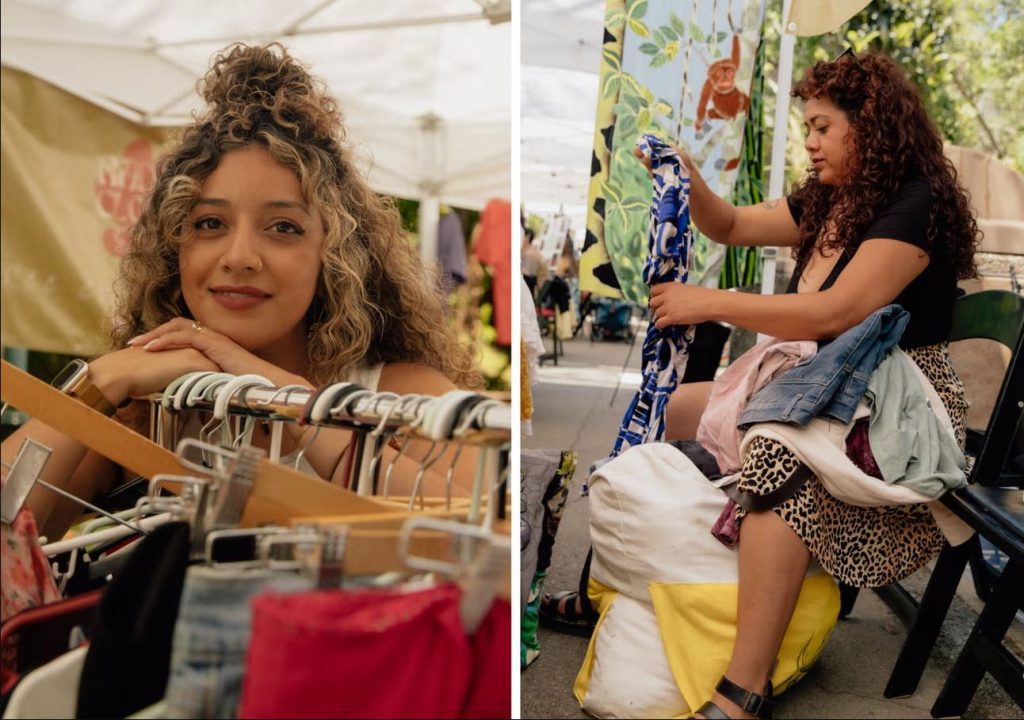Blog
Fast Fashion’s Waste and Thrifting’s Flaws: Embracing Clothing Swaps as a Sustainable Solution
Introduction
The fast fashion industry is notorious for its detrimental environmental impact, driven by the relentless demand for cheap, trendy clothing. While thrifting has been promoted as a more sustainable alternative, it is not without its own issues. A promising solution that combines sustainability with community engagement is clothing swaps. These events can significantly reduce waste and promote a circular economy, all while fostering a sense of community and style consciousness.
Fast Fashion: A Wasteful Trend
Fast fashion brands produce vast quantities of clothing at low costs, encouraging consumers to frequently update their wardrobes. This model results in staggering amounts of textile waste, pollution, and unethical labor practices. According to the Environmental Protection Agency (EPA), millions of tons of textile waste end up in landfills each year, contributing to environmental degradation. The industry’s rapid production cycles and disposable culture exacerbate this issue, making it clear that alternative approaches are needed.
Thrifting: A Flawed Alternative
Thrifting has gained popularity as a counter to fast fashion, offering a way to recycle clothing and reduce waste. However, this solution is not without its problems. Thrift stores can be overwhelmed with donations, many of which are unsellable and end up in landfills. Additionally, the rise in demand for second-hand clothing has led to price increases, making it less accessible for those who rely on these stores for affordable options. Moreover, thrifting does not address the root of the problem: the overproduction and overconsumption of clothing.
Clothing Swaps: A Sustainable Solution
Clothing swaps offer a compelling alternative by addressing both the wastefulness of fast fashion and the limitations of thrifting. These events involve individuals exchanging their gently used clothing with others, creating a sustainable loop where clothes are reused and appreciated anew without monetary transactions. Here are some key benefits:
- Reduction of Waste: Swapping allows clothes to be reused, significantly cutting down on textile waste. Items that might have ended up in landfills get a new lease on life.
- Community Building: Clothing swaps foster a sense of community and encourage social interaction. Participants can share stories, fashion tips, and create bonds over shared interests in sustainable living.
- Cost-Effective: Unlike purchasing new or even thrifted items, swapping is free. This makes it an accessible option for people from all economic backgrounds.
- Unique Finds: Swappers often discover unique pieces that aren’t available in stores, allowing for more personalized and diverse wardrobes.
- Mindful Consumption: Participating in swaps promotes a shift towards more mindful consumption. Individuals become more conscious of their clothing choices and the impacts of their shopping habits.
How to Get Started with Clothing Swaps
Organizing or participating in a clothing swap is straightforward. Here are some steps to get started:
- Organize an Event: Find a venue and set a date. This could be a community center, a park, or even a spacious home.
- Set Guidelines: Establish clear rules about the condition of the items being swapped. Clothes should be clean and in good condition.
- Spread the Word: Use social media, community boards, and word of mouth to invite participants.
- Arrange the Swap: On the day of the event, organize clothes by type and size for easy browsing.
- Enjoy and Swap: Encourage participants to mingle, try on clothes, and enjoy the experience.
Conclusion
The fast fashion industry’s environmental impact and the limitations of thrifting highlight the need for innovative solutions. Clothing swaps present a sustainable and community-driven alternative, promoting a circular economy and reducing waste. By embracing swapping, we can make a positive impact on the environment, foster community connections, and enjoy unique, cost-effective fashion. It’s time to rethink our consumption habits and swap our way to a more sustainable future.
 Skip to content
Skip to content

